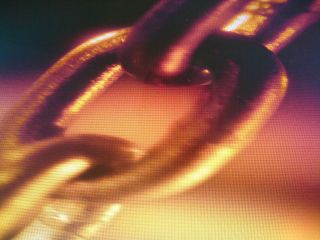for a one click look up of words you don't understand click the link 
for a one click look up of words you don't understand click the link 

CONSCIOUSNESS
an accumulation of the experiences of various realities of infinity
10th september 2011 a strobe light flashes 50 times every second
on the odd numbers 1,3,5,7,9,etc it flashes to the left of you
on the even numbers 2,4,6,8, etc it flashes to right of you
because the brain can only see 24 flashes a second
for one second it will seem to be continually on at the right of you at the same time it will appear to be continually on on the left
|
NOTES AND ARCHIVE
Now imagine performing this test with a stream of neutrons. There are only two choices and the neutrons pass through one or other of the slits. As a result there are only two "flashes" on the card. Neutrons do now act like waves, and so the interference pattern is not observed. However, if you fire one neutron at a time, there are still two flashes. The conclusion; the neutron passes through both slits at the same time. Read that bit again. Why this happens was a mystery for a long time, but there is a solution. The Heisenburg Uncertainty Principle states that it is impossible to know a sub-atomic particles position and vector at the same time. So the neutron's position cannot be determined with any accuracy, because this destroys the data, ie the position is changed by measuring it. So the neutron's position is described by a probability wave function, and this allows it to pass through both slits, as there is a probability that it could pass through either. The neutron exists in a superposition state, where it can occupy two locations at the same time. To think of it another way, the neutron is too small to be "seen" because it is smaller that the wavelength of light and light simply passes it without reflecting off it. You can determine it's position by using energy with shorter and shorter wavelengths, like Gamma rays, but the shorter wave length means the wave has more energy. When the wave hits the neutron, it transfers part of that energy to the neutron, which makes it change position.1 You can use longer wave lengths to measure it, which will transfer less energy to it, but they won't give you as accurate a position. This is where the probability wave function comes in. It provides a range of positions that the neutron can be in. An explanation is available at the Wave-Particle Duality entry. In Young's experiment, the neutron passes through both slits because there is no wave trying to determine it's position, so it can remain in it's superposition state and create two flashes. Interesting Times Recently quantum physists have been having some sucess with looking at Hardy's paradox, using a technique called "weak measurement", which lets them look at quantum states without disrupting them. While not being Young's slit experiment, it is peripherally related, as is Shroedinger's cat. This "weak measurement" using some very strange effects on the quantum level, and while you would think it would collapse the superposition, it doesn't seem to do that. It works by using a beam splitter and making it follow two paths, then re-combining it at a dectector. Another problem is that entanglement has been observed to act across time as well as space. In particular, when the same particle stream is measured, sometimes once, sometimes twice, in a time frame such that the second measurement affects particles which have already been measured. Then when the first result for each particle is analysed, you can spot those that were measued twice from the data. This no more fits the theories than the instant action at a distance that you get with ordinary entanglement, but has the extra problem that it seems to defy causality. For more inforamtion, look at University of Missouri - St.Louis. -------------------------------------------------------------------------------- 1 It's like trying to measure the position of a baseball by hitting it with the bat. You know it's position for a split-second, then it gets sent in another, unpredictable direction. |